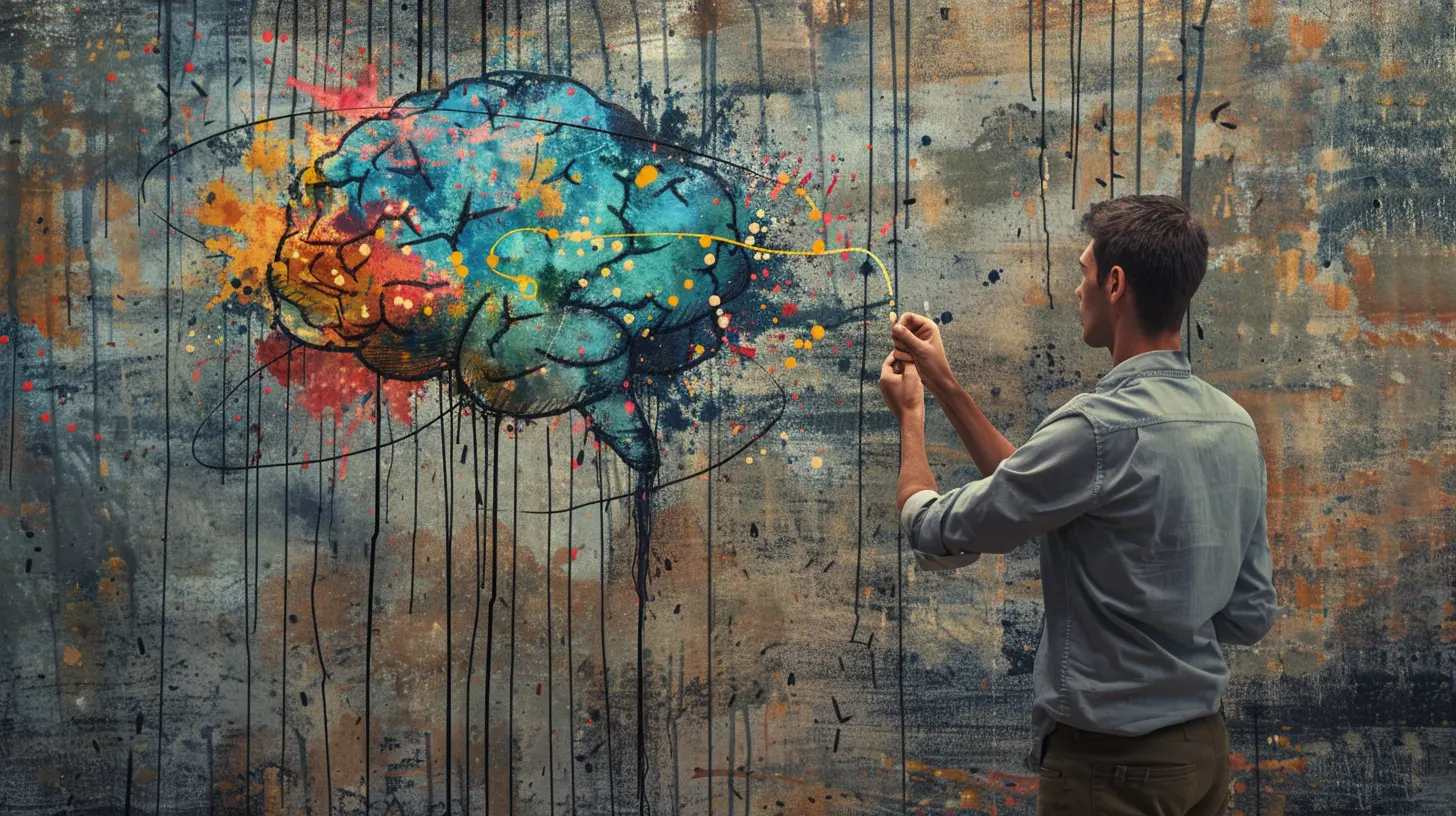How Self-Regulation Skills Evolve During Early Development
16 June 2025
Welcome to the fascinating world of tiny humans and their big feelings! If you've ever witnessed a toddler go from giggles to full-on meltdown mode because their banana broke in half, then you’ve had a front-row seat to the early stages of self-regulation. Grab your coffee (or calming tea—no judgment here), and let’s dive into how these magical, messy regulation skills bloom from baby blobs to mini-humans with emotional toolkits.

What Is Self-Regulation, Anyway?
Okay, let’s not get ahead of ourselves. Before we start analyzing the emotional life of a 3-year-old, let’s break down what we mean by self-regulation.Self-regulation is basically the brain’s version of a thermostat. It's the ability to manage emotions, behaviors, and body movements in response to a situation. It helps people stay cool under pressure, follow rules, wait their turn, and avoid screaming in the middle of the grocery store because someone dared to touch their cart.
In kids, self-regulation isn’t just handed to them with their birth certificate. Nope. It evolves. And it’s quite a journey—from screaming infants to relatively contained teenagers (emphasis on relatively).

The Building Blocks of Self-Regulation
Let’s start with the basics. Self-regulation doesn’t just show up with a diaper and a grin. A few key ingredients need to come together:- Cognitive skills (like attention and memory)
- Language ability (to express feelings without Hulk-smashing)
- Social understanding (hello, empathy!)
- Emotional awareness (the "I’m mad because I’m tired" realization)
- Parental and environmental support (aka the grown-ups trying not to lose their minds)
All these pieces are like LEGO blocks that help kids build that fancy self-regulation castle—complete with emotional drawbridges.
Self-Regulation Starts Sooner Than You Think
Babies: Cry First, Think Later
Let’s start at the very beginning—infants. Tiny, adorable bundles of joy (and occasional chaos). Babies have absolutely zero self-regulation at birth. ZERO. Their solution to everything? Cry. Hungry? Cry. Tired? Cry. Uncomfortable in their romper that grandma gave them? Cry.But here’s the cool part: babies start picking up clues about regulating themselves through interactions with their caregivers. Ever see someone swaddling a fussy baby and gently bouncing them to sleep? That’s co-regulation: the caregiver is acting as a temporary emotional thermostat.
Important milestone: Around 3-4 months, babies might start to use some simple strategies—like sucking their thumb or looking away—to calm down. TL;DR? They’re not experts yet, but they’re trying!
Toddlers: Tiny Tornadoes With Feelings
By the time the baby hits toddlerhood—roughly 1 to 3 years old—they’ve developed mobility, opinions, and a fondness for the word “NO.”And while they're still emotional rollercoasters, you may start to see signs of self-regulation. For example:
- They may look to you before stealing a toy (progress… sorta).
- They might try to avoid getting in trouble by pointing at the dog instead.
- They begin experimenting with waiting. (Keyword: experimenting.)
But let’s be real. If toddlers were a weather forecast, we’d be facing emotional thunderstorms every 45 minutes.
Why the drama? Well, their brains are still under construction. The prefrontal cortex (a.k.a. the CEO of self-control) is just starting to boot up. Don’t expect miracles. They’ll test boundaries and push buttons. (Yours, mostly.)
Preschoolers: The Self-Regulation Training Wheels
Between the ages of 3 and 5, things REALLY start to click. It’s like watching your phone finally update its software—you didn’t know what was missing, but it’s suddenly smoother.These kids begin to:
- Talk about their feelings (“I’m mad!” instead of just biting someone)
- Follow simple rules (and occasionally remember them)
- Use basic self-control (“Wait your turn”… and they sort of do)
Preschoolers start to internalize techniques modeled by adults. If you take deep breaths when you're stressed, guess what? They might copy you. Not perfectly, but hey—it’s a start!
They also learn emotional vocabulary. Ever watch a 4-year-old proudly announce, “I’m frustrated!” instead of going full Godzilla on their blocks? That’s growth, baby.
Early School-Age Kids: Stepping Into Their Emotional Shoes
Once kids hit school age (think 6 to 8), self-regulation gets more advanced. These little humans are now navigating classrooms, friendships, and the trauma of not getting picked first in dodgeball.They start to:
- Delay gratification (sometimes—they’re not saints)
- Think through consequences (“If I throw this eraser, I’ll get in trouble”)
- Show empathy (awww, they hugged a sad friend!)
This age group benefits a ton from structure and routine. It’s like emotional scaffolding—predictability gives them the foundation to build self-control.
Plus, school rules and peer feedback offer a crash course in emotional management. Nothing like getting scolded in front of your crush to teach you impulse control.
The Science-y Bit (But Fun, Promise)
You're probably wondering: what's going on inside those pint-sized brains during all this? Let's break it down—simple-style.The primary players in the development of self-regulation are:
- Prefrontal Cortex: Think of this as the brain’s executive assistant. It sets priorities, makes plans, and calls for backup when there’s a tantrum approaching.
- Amygdala: The emotional alarm system. It’s the one shouting “CODE RED” in your brain. In kids, it’s loud. Like, really loud.
- Anterior Cingulate Cortex: This guy helps resolve conflicts, like deciding whether to grab a toy back or calmly ask for a turn (plot twist: it’s usually both).
During early development, these areas undergo massive changes. Synapses are firing like crazy. Myelin (that brainy insulation) is forming. It’s like upgrading from dial-up to Wi-Fi.
So, What Can Adults Do to Help?
Now that you know what’s going on, it’s time to get hands-on. Whether you’re a parent, teacher, or loving aunt who’s been peed on during potty training—you’ve got a role to play.1. Model the Behavior You Want to See
Kids are sponges. If you stay calm when you're frustrated, they’ll learn that too. (At least, eventually. Sometimes after a solid tantrum.)2. Offer Emotional Language
Instead of saying, “Stop crying,” try “Are you feeling sad because your cookie broke in half?” This helps them connect feelings with words, not just wails.3. Create Routines
Predictability = security. Routines give kids the emotional bandwidth to practice self-regulation instead of figuring out what happens next.4. Praise the Process
“Great job calming down!” hits differently than “Good boy.” Recognize how they regulated, not just that they did.5. Play Games That Build Control
Ever played “Simon Says” or “Red Light, Green Light”? Congrats, you’ve trained mini Jedi in impulse control.Common Challenges (And Why They’re Totally Normal)
Self-regulation doesn’t evolve on a straight path. Kids regress, have off days, and sometimes act like emotional confetti.Here are a few hiccups that are par for the course:
- Overstimulation: Too many people, noises, lights = emotional overload.
- Hunger/Tiredness: The holy duo of meltdowns.
- Big changes: New school? Baby sibling? Emotional thermometers go haywire.
- Individual differences: Some kids are naturally more chill. Others? Born dramatic.
It’s all normal. Really. Even the dramatic ones.
When Should You Worry?
While every child develops at their own pace, there are a few red flags to watch out for:- Persistent aggression beyond toddlerhood
- Extreme difficulty adjusting to routine
- Inability to interact with peers without conflict
- Complete lack of emotional vocabulary past age 4 or 5
If any of these sound familiar, it’s worth chatting with a pediatrician or child psychologist. Early support can be a total game-changer.
Why It All Matters
Okay, so why are we even talking about emotional regulation like it’s the new black?Because self-regulation is linked to:
- Better academic performance
- Stronger friendships
- Fewer behavior problems
- Resilience in stressful situations (like running out of dessert)
Simply put, it’s one of the most important life skills a child can develop—and it starts EARLY.
Even if your kid is currently losing their marbles over which color cup they got, trust me: those emotional building blocks are stacking up.
Final Thoughts: The Emotional Rollercoaster Is Worth It
Just like potty training, learning to tie shoes, or understanding that chocolate isn’t a breakfast food (debatable), self-regulation is a process. It’s sometimes messy, often noisy, but always meaningful.So the next time you're dealing with a wild preschool meltdown or a moody 7-year-old who just can’t even, remember this: they’re growing. Their brains are learning. And with your support (and patience… lots of patience), their emotional thermostat will eventually find its sweet spot.
And hey, if all else fails—there’s always coffee.
all images in this post were generated using AI tools
Category:
Cognitive DevelopmentAuthor:

Jenna Richardson
Discussion
rate this article
2 comments
Etta McDougal
This article provides valuable insights into the development of self-regulation skills in early childhood. Understanding the evolution of these skills is crucial for parents and educators alike, as it highlights effective strategies to support children's emotional and behavioral growth during their formative years. Thank you for sharing!
October 12, 2025 at 3:46 PM

Jenna Richardson
Thank you for your thoughtful comment! I'm glad you found the insights valuable for supporting children's growth.
Mia Harris
Fascinating insights! It's incredible how early experiences shape self-regulation—nature and nurture dance together to mold our emotional future.
June 19, 2025 at 3:11 AM

Jenna Richardson
Thank you! It's indeed a dynamic interplay between nature and nurture that significantly influences self-regulation.


